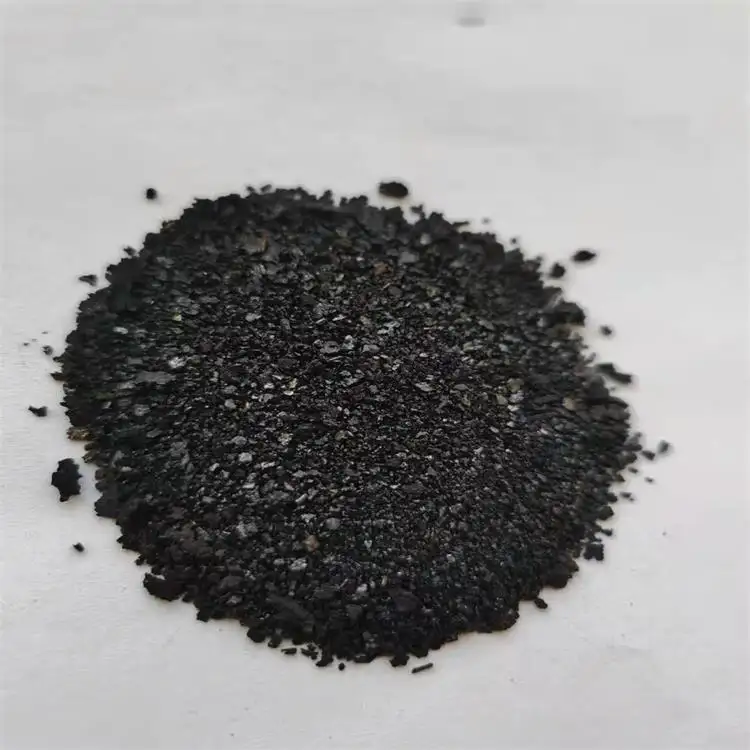dyeing indigo products
Dyeing Indigo Products A Timeless Tradition
Indigo dyeing is an ancient practice that has transcended cultures and centuries, rooted in a rich history that dates back over 5,000 years. The deep blue hue derived from the indigo plant, particularly Indigofera tinctoria, has captivated artisans and consumers alike, leading to the creation of a vast array of products, particularly textiles. This article delves into the artistry and significance of dyeing indigo products, exploring its techniques, cultural implications, and sustainability aspects.
At its core, indigo dyeing involves a process that is both intricate and time-consuming. The leaves of the indigo plant are harvested and fermented to extract the dye. This natural dyeing process can vary widely, involving techniques such as resist dyeing, where fabrics are tied or bound to create patterns, or shibori, a Japanese method that employs folding and stitching to achieve unique designs. Each technique yields distinct visual results, showcasing the creativity and skill of the artisan. The art of indigo dyeing not only highlights the aesthetic qualities of the final product but also embodies the cultural narratives of the communities that practice it.
The cultural significance of indigo dyeing cannot be overstated. From the traditional indigo-dyed textiles of West Africa to the vibrant blue of Japanese boro cloth, each region has its unique approach to using this color. In Africa, indigo dyeing has long been an expression of identity and community, with each pattern telling a story or conveying a particular message. In India, the craft of indigo dyeing, particularly in the regions of Gujarat and Rajasthan, is vital to local economies and traditions, often passed down through generations. In Japan, the historical connection to indigo has given rise to a powerful aesthetic movement, wherein artisans blend tradition with modern design.
dyeing indigo products

In recent years, there has been a resurgence of interest in indigo dyeing, particularly in the context of sustainable fashion. As consumers become increasingly aware of the environmental impacts of synthetic dyes, many are turning back to natural alternatives like indigo. The process of dyeing with indigo is more sustainable than many industrial synthetic dyes, requiring less water and fewer harmful chemicals. Moreover, the longevity and durability of indigo-dyed products make them a more sustainable choice for consumers seeking quality over quantity.
However, the revival of indigo dyeing also presents challenges, as traditional techniques must be preserved amidst modernization and mass production. It is essential to support artisanal practices that protect the cultural heritage while providing fair wages and sustainable livelihoods for artisans. Various initiatives and organizations are working towards this goal, emphasizing the importance of ethical sourcing and production practices.
In conclusion, dyeing indigo products is more than just a technique; it is a celebration of culture, heritage, and sustainability. As this ancient craft continues to thrive in the modern world, it offers an insightful reflection on our relationship with color, materials, and the environment. By embracing the beauty and depth of indigo, we honor a tradition that has enriched human expression across the globe, ensuring that the artistry of indigo dyeing remains vibrant for generations to come.
-
The Timeless Art of Denim Indigo Dye
NewsJul.01,2025
-
The Rise of Sulfur Dyed Denim
NewsJul.01,2025
-
The Rich Revival of the Best Indigo Dye
NewsJul.01,2025
-
The Enduring Strength of Sulphur Black
NewsJul.01,2025
-
The Ancient Art of Chinese Indigo Dye
NewsJul.01,2025
-
Industry Power of Indigo
NewsJul.01,2025
-
Black Sulfur is Leading the Next Wave
NewsJul.01,2025

Sulphur Black
1.Name: sulphur black; Sulfur Black; Sulphur Black 1;
2.Structure formula:
3.Molecule formula: C6H4N2O5
4.CAS No.: 1326-82-5
5.HS code: 32041911
6.Product specification:Appearance:black phosphorus flakes; black liquid

Bromo Indigo; Vat Bromo-Indigo; C.I.Vat Blue 5
1.Name: Bromo indigo; Vat bromo-indigo; C.I.Vat blue 5;
2.Structure formula:
3.Molecule formula: C16H6Br4N2O2
4.CAS No.: 2475-31-2
5.HS code: 3204151000 6.Major usage and instruction: Be mainly used to dye cotton fabrics.

Indigo Blue Vat Blue
1.Name: indigo blue,vat blue 1,
2.Structure formula:
3.Molecule formula: C16H10N2O2
4.. CAS No.: 482-89-3
5.Molecule weight: 262.62
6.HS code: 3204151000
7.Major usage and instruction: Be mainly used to dye cotton fabrics.

